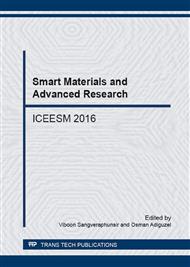p.3
p.7
p.12
p.17
p.22
p.27
p.32
p.37
A New Permeability Model for ECBM and Carbon Dioxide Sequestration Based on Matchsticks Geometry
Abstract:
In the paper a new permeability model based on matchstick model accounting for stress change and matrix shrinkage and swelling caused by gas mixture (CH4 and CO2) is proposed. Finally, a history matching exercise is carried out using field data and experimental data and several models are compared to determine the accuracy of the new model. The modeling results show that the new model can fit the experimental results well. With the exchange of CH4 on coal matrix with CO2, the coal matrix tends to swell and the coal permeability will decrease. So the fracture pressure has better to be high enough to guarantee the easy flow of gases in coal seam. Only when we know the coal permeability change during CO2 injection, can we have better knowledge about the ECBM performance and CO2 sequestration feasibility for a certain coal seam.
Info:
Periodical:
Pages:
12-16
Citation:
Online since:
January 2017
Authors:
Keywords:
Price:
Сopyright:
© 2017 Trans Tech Publications Ltd. All Rights Reserved
Share:
Citation:


